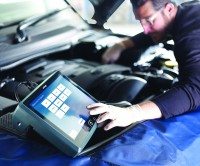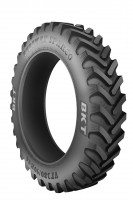Vehicle Identity Check scheme to be abolished
The Vehicle Identity Check (VIC) scheme that is required before repaired write-offs are allowed back on the road is to be abolished from 26 October 2015.
Discarding VIC has the following implications for vehicle owners:
- From 26 October 2015 a new simpler process that will not require a VIC where the insurer has categorised the vehicle as suitable for repair.
- Transitional arrangements will apply from the 1 – 26 October 2015 to make sure that VIC inspections can be completed for vehicle applications already in the system.
Following the abolition of VIC, the DVLA will no longer issue V5C’s for Category A and B vehicles, helping to ensure that the most seriously damaged vehicles are processed via the ‘End of Life Vehicle arrangements’ in line with the ‘Insurance Industry Code of Practice for the Disposal of Motor Vehicle Salvage’.
Category A and B vehicles will continue to require a VIC check to obtain a replacement registration document up to 25 October 2015. For applications after this date these vehicles will no longer be issued with a V5C and must be destroyed (if cat A) or can be broken for parts (cat B).
Commenting on these changes, the National Association of Bodyshops (NAB) and Vehicle Builders and Repairers Association (VBRA) have issued the following statement:
“While NAB and the VBRA welcome the much needed changes to the current system of managing total losses, following high-profile casualties arising from accidents involving rebuilt write-offs, we do not believe these measures go far enough.
“Our members continuously have to deal with previously written off vehicles, which have been sold to unsuspecting consumers and re-insured, only to be found unsafe when dismantled for a subsequent repair.
“In our dialogue with Department for Transport (DfT) and in our submissions to the recent Competition and Markets Authority (CMA), during their investigation into private motor insurance market, we have consistently warned about the risks to consumers and potential for abuse that arises from the voluntary categorisation and disposal of vehicle salvage, particularly where there are no sufficient checks and balances.
“The scandal that has recently been uncovered in the vehicle manufacturing sector is a classic example of market distortion and abuse that can occur through poor regulation.
“Where stakeholders continue to have a commercial interest in maximising the value of motor vehicle salvage, any voluntary code of practice will remain vulnerable to abuse.”
NAB and the VBRA have vowed to keep the pressure on government to safeguard consumers by seeking improved legal, ethical and moral behaviour within the motor insurance claims sector through the appointment of an independent watchdog, The Motor Insurance Conduct Adjudicator (MICA).




Comments